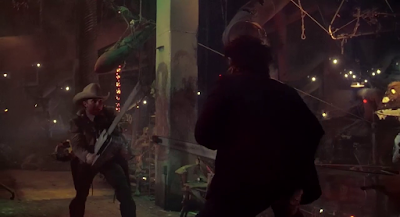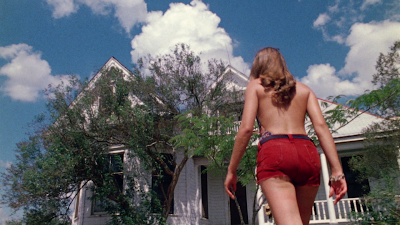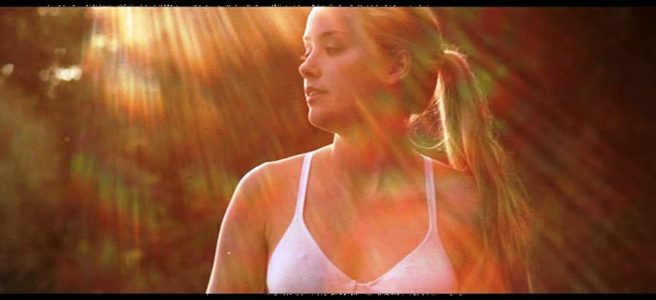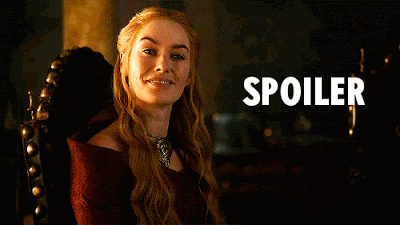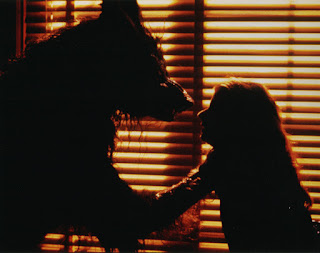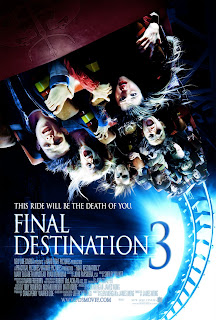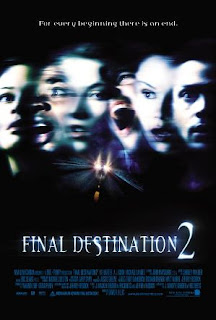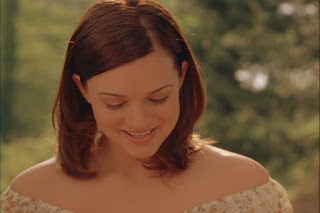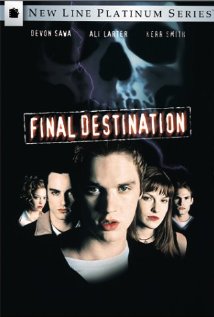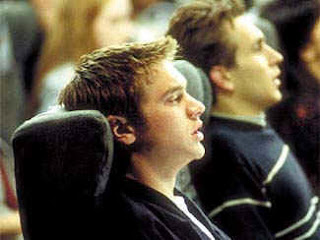Welcome back to The Texas Chainsaw Massacre retrospective! In today entry we’re going to be covering the Platinum Dunes remake, 2003’s The Texas Chainsaw Massacre! This is the film which kicked off the horror remake craze in the 2000s, for better or worse. It was also my first exposure to the franchise – I remember as a kid hearing about this movie from other kids on the bus talking about people getting their limbs chainsawed off and getting hung on a hook. Suffice to say, as a little evangelical kid it sounded like evil debauchery to me, but the imagery in my mind stuck with me and made me curious throughout the years until I finally saw the film. How does the remake hold up? Read on to find out…
PRODUCTION
After Columbia Tristar tried to bury Texas Chainsaw Massacre: The Next Generation, the rightsholders spent years in court before the whole fiasco was settled. During this time, William Hooper (son of Tobe Hooper) was planning on making a new Chainsaw short starring Bill Moseley. This film was going to be called “All American Massacre“ and would have featured Chop Top recounting stories of his family’s misdeeds. This short ended up getting expanded into a 60 minute feature with a score by Buckethead. However, it was eventually shelved when Hooper ran out of money to complete it, leaving the project in limbo where it currently resides, with only a short trailer proving it ever existed.
Late in 2001 Michael Bay’s new production company, Platinum Dunes, decided that they wanted their first project to be a remake of The Texas Chain Saw Massacre and went ahead securing the rights. Platinum Dunes aimed t0 produce low-budget films with high profit margins and a Chainsaw remake seemed like the best way to test that. Tobe Hooper and Kim Henkel were brought on a co-producers on the film. Marcus Nispel, a director of many high-profile music videos, was hired to direct the film. Interestingly, Nispel’s regular cinematographer and long-time friend, Daniel Pearl, was actually the cinematographer for the original Chainsaw. Pearl was also hired as director of photography for the remake. Scott Kosar, writer of such films as The Machinist, The Crazies and the remake of The Amityville Horror, made his scriptwriting debut on this film. He decided early on that the film shouldn’t be a direct remake of the original, but rather take the same scenario and use it as inspiration. He also went back to the story of Ed Gein for further influence.
Jessica Biel was cast to play the film’s heroine, Erin. Biel was just coming off of her role in 7th Heaven and (whether true or not) there was a perception that she was looking to shed her goody-goody image that the show had fostered. In earlier drafts of the script, Erin was actually supposed to be nine months pregnant which would have added an interesting dimension to the plot, but Michael Bay shot the idea down. Nispel claims that Erin is pregnant during the events of the film, but there is nothing in the film itself which suggests that this is the case. The principal cast were filled out with a number of young, up-and-coming actors: Eric Balfour was cast as Erin’s boyfriend, Kemper, Erica Leerhsen as Pepper, Mike Vogel as Andy, and Jonathan Tucker as Morgan. On the villainous side of the cast, freaking R. Lee Ermey was cast as Sheriff Hoyt. As for Leatherface, Andrew Bryniarski (most notable for playing Zangief in the Street Fighter movie) was a friend of Michael Bay’s and asked him at a Christmas party if he could play the role. However, Bay had to turn him down because Leatherface had already been cast. However, according to Wikipedia (so take this info as you will, I only found an interview that verifies this story) the actor who was cast as Leatherface was injured on the very first day of shooting after lying about his physical qualifications and was subsequently fired. In dire need of a replacement actor to play the villain, Byrniarski was called up and cast.
The film’s budget was set at less than $10 million and filming took place in Texas once again. Like all of the other Chainsaw films in Texas, this created the usual problems for the cast and crew, with hot and humid weather making life difficult. This was hardest on Bryniarski, as he had to perform in a fat suit and wore a mask during the entire shoot, making it difficult to breathe and forcing him to stay hydrated to avoid passing out. The film was released on October 17, 2003 and made its budget back within the first day. Suffice to say, it was a box office hit although the reviews at the time were mixed. Roger Ebert famously hated it, giving the film a rare 0/4 stars.
PLOT SYNOPSIS
The film opens with police footage of the “real life” crime scene of the Hewitt family (the name of the family has been changed from “Sawyer” in this timeline). It then flashes back to the events of that day and we are introduced to a group of young people travelling through Texas. The group has just returned from a vacation in Mexico, where they picked up a woman named Pepper who Andy has had a tryst with, and are headed to a Lynyrd Skynyrd concert. Erin discovers that the group is secretly smuggling drugs that they acquired during the trip south of the border and, after distracting her boyfriend, Kemper, about it, he nearly hits a woman walking beside the road. The group picks the woman up and tries to take her to the hospital, but she begins going crazy and shoots herself in the head. The group is, understandably, shocked and tries to find the local sheriff to report the incident. The locals direct them to an old mill to wait for the sheriff, but when he does not arrive, a local boy directs Kemper and Erin to a nearby house where he is supposed to live. When they arrive, the owner of the house says that the sheriff does not live here, but offers Erin use of his phone. Kemper then wanders into the house and is ambushed by Leatherface and killed. Erin leaves after phoning the sheriff, not realizing that Kemper had gone into the house and assuming that he went back to the others.
Meanwhile, Sheriff Hoyt arrives at the mill and begins taunting and questioning Andy, Morgan and Pepper about what happened. He forces Andy to help him wrap up the body and then gets Morgan to join in and help put the body in the back of his vehicle before leaving. Erin gets back after he has left and is surprised that the sheriff has already come and gone. She also is surprised that Kemper is not with the others and so she and Andy decide to return to the house to figure out what happened to Kemper. Erin distracts the homeowner while Andy sneaks into the house, but when they are discovered, Leatherface chases after the pair with a chainsaw. During the escape, Andy’s leg is sawed off by Leatherface and he is dragged into the basement to be hung on a meathook. Erin makes it back to the others and then tries to get the van started so that they can find help, but they are stopped by Sheriff Hoyt. Hoyt doesn’t listen to Erin’s stories about a chainsaw-wielding maniac killing her friends and instead arrests them after finding marijuana in the vehicle. He taunts Morgan, forcing him to re-enact the hitchhiker’s suicide until Morgan turns the gun on Hoyt. However, the gun is not loaded and Hoyt beats Morgan before taking him away in his squad car.
Now on their own, Erin and Pepper try to escape in the van, but are attacked by Leatherface. Pepper is killed while trying to escape, while Erin flees to a nearby home. The owners of the house try to placate her, until Erin realizes that they are complicit with the Hewitts – the child in this home was from a family killed by the Hewitts. The locals drug Erin and when she awakes she has been brought to the Hewitt house by Hoyt. She gets dumped into the basement by Leatherface where she finds Andy hanging from the meathook. After trying to free him, Andy begs Erin to kill him, which she does so using a large knife. She then finds Morgan, badly beaten, and tries to escape with him. Leatherface realizes that they are trying to escape and pursues them into another abandoned house. After a lengthy game of cat-and-mouse, Leatherface finds the pair and kills Morgan. Erin flees into the local slaughterhouse where she finally gets the upper-hand on Leatherface, severing his arm with a meat cleaver. She then flags a passing truck driver to escape, but when the driver tries to find locals to help her, she realizes that he’s going to inadvertently deliver her back to Hoyt. She escapes the truck and finds that they’re at the house with the kidnapped child. Erin takes the child back and then, when Hoyt comes to investigate the truck, she runs him over with his own police cruiser and escapes, but not before Leatherface shows up for one last swipe at the fleeing vehicle. In the epilogue, it is revealed that the police seen in the opening footage were killed by Leatherface and that he is still out there somewhere.
REVIEW
I don’t want to spend the bulk of this review comparing the remake with the original film, but suffice to say that The Texas Chainsaw Massacre strikes a good balance between original ideas and reverence to the original. One aspect of the remake which stands out is that it’s far more glitzy than any of the other Chainsaw films. This is likely due to the influence of Platinum Dunes, as Michael Bay is known for his flashy, flawless, Hollywood film-making aesthetic. Daniel Pearl was quite up-front about not wanting to recreate the grainy, documentary-style aesthetic of the original Chainsaw, but the differences go further than that. Whereas the original film and (to a lesser extent) its sequels had aimed for fairly normal-looking actors, the remake casts very pretty, Hollywood talent. The film also just feels different, no longer lingering on disturbing imagery and forcing the audience to piece a picture together from what they’ve seen. Instead, scares are far more conventional, edited in a disorienting fashion and set to “scary music”. Thankfully, the film doesn’t really rely on irritating jump scares, but regardless the horror is nowhere near as effective as it was in the original.
I was also surprised by how little gore there was in this film – I’ve seen this movie at least two or three times now and I remember it being far bloodier and nastier than it actually was. However, while the film is definitely far more explicit than the original film, it follows a similar philosophy of keeping the worst of the violence to your imagination. For example, Andy gets his leg chopped off very quickly and with only a little blood, Pepper gets hacked up with a chainsaw off-screen, Morgan gets cut nearly in half from the crotch upward off-screen, and Kemper’s face gets cut off and made into a mask entirely off-screen. In fact, the only truly R-rated scenes of violence are the hitchhiker shooting herself in the head (complete with a camera pan backwards through the freaking bullet hole) and Leatherface losing his arm, but the film is nowhere near as brutal as I remembered. This works in the film’s favour though, it makes you use your imagination to fill in the blanks, hence why I remembered the film being nastier than it actually was. Apparently the film was originally intended to be far more graphic though, with much more brutal on-screen kills for Morgan, Pepper and Kemper planned, and Leatherface was also supposed to murder his own nephew Jedidiah for helping Erin and Morgan escape (which presumably was cut due to it being too brutal for a kid to be killed).
As for the film’s script, it follows the outline of the original film in very broad strokes without straight-up ripping off any of the scenes (unlike all of the other sequels in this franchise, each of which have effectively remade the dinner scene). Like, instead of travelling to Texas to check in on their family’s grave, the group is heading to a concert. Instead of picking up a hitchhiker who attacks the group, the hitchhiker commits suicide in their car. Instead of stumbling across the Sawyer house while looking for gas, they find the Hewitt residence while searching for the sheriff. As you can see, the remake follows the same outline as the original, while also providing its own twists on the formula, which is a good direction to take a remake in my opinion. In fact, I’d argue that some of the additions are actually improvements (blasphemy, I know). In particular, the characters’ deaths feel like there is much more purpose to them in this film. In the original, the characters just kept wandering onto the Sawyers’ property and getting murdered because of that. In the remake, characters usually die for more interesting reasons. The characters come across the Hewitt house because they were told that that was where they could find the sheriff, which leads to Kemper getting ambushed by Leatherface. Andy gets his leg cut off because he broke into the Hewitt house trying to find Kemper and then gets mercy-killed by Erin. Pepper dies trying to escape Leatherface. Morgan dies saving Erin. I get that the purposelessness of the original film’s deaths is part of the point of that film, but I have to say that the remake’s deaths feel more satisfying from a narrative standpoint. There are also some interesting little additions to the film which I enjoyed, such as the peepholes that the Hewitts have installed around their house which allow them to spy on uninvited guests, having Erin’s rescue mirror the hitchhiker’s suicide from the start of the film and that the whole community seems to be complicit with the Hewitts’ crimes now.
However, the script has some definite issues and is also noticeably messy and disappointing in its third act. The film is really solid up until Erin is kidnapped and brought to the Hewitt house, at which point it starts to nosedive. For one thing, there are just too many dumb conveniences here. Like, when Leatherface tossed Erin into the basement unrestrained, what was he expecting to happen? Of course she was going to free Morgan and try to escape. In addition, Jedidiah’s character is just super convenient. For no explicable reason he suddenly decides to grow a conscience and help Erin and Morgan escape. It also doesn’t help that the third act doesn’t bother to give us any motivation for the villains. There’s nothing to suggest that the Hewitts are cannibals, they just kill people… because, I guess? Funnily enough, as much as I rag on Chainsaw films ripping off the dinner scene every time, this film actually needed a dinner scene, or an emotional equivalent, in its third act. Instead, we just get an extended chase sequence for the entire last half hour of the film. Imagine if the original Chainsaw had ended with Sally running away from the gas station for another 10 minutes after finding out Drayton is a villain and then the film just ends – obviously it wouldn’t have anywhere near the same impact, but that’s basically what this film does. While I’m glad that they didn’t just rip off the dinner scene again, this film definitely needed some sort of scene with Hoyt taunting Erin and a giving us better understanding of what the Hewitts are up to. I’m also not a huge fan of the ending – between Erin rescuing the kidnapped kid that no one really cared about in the first place and her confrontation with Hoyt, it isn’t that great. Her reaction to killing Hoyt felt weird to me because the two characters barely interacted throughout the film – all of his emotional abuses were directed towards the other characters, whereas Erin was usually absent, so it doesn’t really resonate as well as it should. Also, the rescued kid felt totally tacked on, possibly all the way back to the draft where Erin was nine-months pregnant. Having her somehow sneak in and rescue this kid was just pointless, like the producers wanted to force some sort of ray of sunshine into the ending.
Something else odd that I noticed about the remake is that it follows traditional slasher morality codes more than any other entry in the franchise up to this point. For example, Erin is our final girl because she’s the only member of the group who follows traditional morality – she objects to the group’s post smoking and excessive drinking and she always insists on doing the “moral” action (rescuing the hitchhiker, waiting for the sheriff to arrive to take the body, etc). During the opening scene, she is contrasted against the pot-smoking Morgan, the furiously horny Andy and Pepper and the moral conflict of Kemper. However, this is also a cruel irony because she is also the reason why everyone else dies – as Hoyt himself says, if she hadn’t picked up the hitchhiker, then they wouldn’t have gotten into this mess in the first place. It’s kind of interesting to consider that in the remake compassion is what gets everyone killed, not simply that the villains are evil.
The film has far less going on in it than the original, but it does notably carry on the theme of society vs barbarism from the first film. Notably, the Texas locals in this film all have some sort of deformity to them, from missing limbs, to gout, to just being sheer lunatics. These deformities are contrasted even more obviously than in the original due to the remake’s much more glamorous and pretty cast. Funnily enough, when I saw the kidnapped kid I was actually going to make a note that this was the first local we had seen which was actually “normal” looking, until it was revealed that this child was actually kidnapped from “civilized” society, a fact which pretty much signifies that this distinction was totally intentional. With this in mind, rescuing the kid at the end is thematically significant to the message of the film, as tacked-on as that part of the ending may seem. I wonder whether the post-9/11 climate helped to inform the tone of the film, where not only is compassion being taken advantage of by evil people, but society and its deviant fringes are colliding violently.
As for the characters, it seems to me that they are all quite flat in the script and only really gain any weight from the people playing them. Luckily for the film, I actually quite liked most of the performances, but when I think back on the characters themselves I realize that there isn’t really much to any of them. Jessica Biel’s Erin makes for a pretty great and capable final girl, probably the second best in the franchise after Stretch. However, she isn’t exactly a compelling character and the revelation that this very moral character spent time in juvie for hot-wiring vehicles comes across as pretty convenient. After her, Kemper is probably the next most compelling, in part due to Eric Balfour’s performance. He really sells the character’s conflict without having to rely on the material to get that across – he’s trying to get money to pay for a wedding ring he purchased for Erin, but in order to do so he is planning on selling pot at the Lynyrd Skynyrd concert they’re attending, a fact which Erin does not approve of. After the hitchhiker kills herself in their vehicle, his plans start to come apart at the seams and it’s interesting seeing him have to make his decisions and juggle the various factors weighing on him. It’s just really sad to see him die, and then later for Erin to see Leatherface wearing her boyfriend’s face is just traumatic. Andy also gets enjoyable in the second half of the film. The first half wastes him as a generic pretty boy, but by the time he joins Erin to try to rescue Kemper, he gets much more interesting. He even gets a short fight with Leatherface before getting his leg chopped off, at which point I just feel really sorry for him. I really like Mike Vogel and I think that his performance is what makes me like Andy so much, it’s just too bad he doesn’t get much to work with. As for Pepper and Morgan? Meh. Morgan is just a total douche, whereas Pepper really doesn’t get much of a character at all.
The villains are where things really shine though. While Sheriff Hoyt is also a rather flat character, R. Lee Ermey turns him into an absolute joy to watch, nearly on par with Chop Top. He isn’t just a rip-off of Full Metal Jacket’s Sargeant Hartman either. Instead of being just abrasive, Hoyt gets a hoot out of being sadistic dick. He loves to taunt his victims and lord himself over them, such as when he makes inappropriately sexual jokes about the hitchhiker’s corpse just to make Andy uncomfortable. He’s also a total bastard when taunting people, most notably when Hoyt tricks Morgan into trying to shoot him, only to reveal that he had unloaded the gun first. He can also be darkly hilarious – during one scene he’s chatting up Morgan and when Morgan tells him that they were heading to a Skynyrd concert, Hoyt tells him that they have something in common. Then he bashes Morgan with a bottle, knocking out a tooth, which causes him to show that he’s missing his front teeth and say that now they have something else in common. It’s nasty, but the way that Ermey sells it is fantastic. Unsurprisingly, he straight-up steals every scene he’s in and the fact that he died in the last year leaves us all poorer as a result.
As for Leatherface, Andrew Bryniarski’s performance is the best since Gunnar Hansen and his mask is also by far the best-looking since the original film, in my opinion . He has a great physical presence and is genuinely frightening to see pursuing the heroes. The character has also been changed a fair bit in this incarnation. He does seem to be mute, but he does not seem to be mentally handicapped anymore; he’s far more cunning and purposeful in his actions than he ever has been. Leatherface also has some sort of skin disease which has eaten away his nose. It actually looks quite nasty and marks the first time we see the character’s face in this series. Also, instead of killing to eat or to defend his home, Leatherface just seems to be evil and going on a rampage in this film. According to director Marcus Nispel, Leatherface is so sadistic and evil because… he was bullied? No seriously, here’s the quote:
“If my son would go mad and wear other people’s faces, I wouldn’t be supportive of him *unless* something happened to him – a deformity or whatever – that is being ridiculed. I think about that a great deal when I think about Columbine. I wonder, ‘Where are the real monsters?’ Who made these kids be that way? […] Now, here’s someone who has no identity, so he has to wear other people’s faces for a mask. People that heckled him. People that are much more beautiful than he is, and a family that knows what drove him to this; namely, that heckling. And that’s why they support him. […] But what really makes it scary is that he’s a real guy – the neighbor’s son on a wild rampage.”
Umm, okay… I get that this was very much inspired by all of the conversations in the aftermath of Columbine, but I really don’t see this as a reasonable motivation for the character to be killing people, let alone why Hoyt would be joining in on it or why the locals would be complicit in his actions. Seriously, this film needed some sort of actual justification for the Hewitt family’s crimes, it just feels like they’re only killing people because they’re evil now. Cannibalism was a commentary on the climate of its time, so perhaps the lack of motivation reflects on the post-9/11 confusion about the causes of evil in the world?
All-in-all, The Texas Chainsaw Massacre is a decent horror remake. It definitely has its issues and the material could have been much stronger, but it’s a pretty enjoyable watch and is quite well-made, especially compared to the horror remakes which tried to ape its success. If more remakes that followed in its wake had actually followed its strengths, then perhaps the trend would not have been as reviled as it came to be.
5.5/10
Be sure to tune in again soon as we take a look at the sixth entry in the franchise, the prequel to the remake, The Texas Chainsaw Massacre: The Beginning!




























